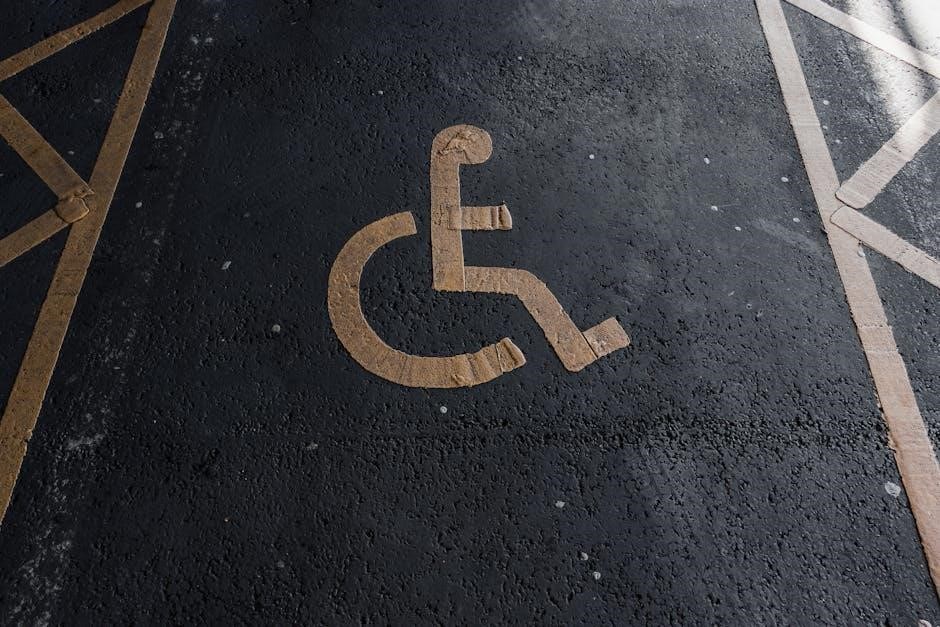
doll markings reference guide to marks
Doll markings are crucial for collectors & dealers. They provide insights into a doll’s origin, manufacturer, & age. Identifying marks enhances value assessment & historical context.
Importance of Identifying Doll Markings
Identifying doll markings is paramount for collectors, historians, and enthusiasts alike, serving as a gateway to understanding a doll’s provenance, age, and potential value. These markings, often subtle and easily overlooked, act as a signature, revealing the manufacturer, the country of origin, and sometimes even the specific year of production. Accurate identification allows for proper cataloging, authentication, and preservation of these delicate artifacts. Without the ability to decipher these marks, one might undervalue a rare and historically significant doll, or conversely, overestimate the worth of a common reproduction. Doll markings are also crucial for researching the history of doll manufacturing, tracing the evolution of design and materials, and understanding the cultural context in which these dolls were created. Furthermore, identifying marks can help in restoring dolls accurately, ensuring that replacement parts and repairs are consistent with the original design and materials. This knowledge empowers collectors to make informed decisions about purchases, sales, and conservation efforts, ultimately contributing to the preservation of doll history for future generations. The quest to identify doll markings is not merely an academic exercise, but a vital step in appreciating and safeguarding these tangible links to the past.

Common Locations for Doll Marks
Doll marks are often found in specific locations. Common spots include the back of the head, upper/lower back, & under the arms or on the feet. Inspect carefully!
Back of the Head
The back of the head is a prime location for doll markings. These marks, often hidden beneath the wig, can reveal crucial information about the doll’s maker, origin, and production period. To inspect, carefully lift the doll’s hair or wig. Look for impressed marks, incised numbers, or company logos. These markings may include the manufacturer’s name or initials, a model or series number, and sometimes the country of origin. Faint or worn marks may require magnification or careful lighting to discern. Be gentle when handling the doll to avoid further damage to the markings or the doll itself. The presence and clarity of these marks significantly aid in accurate identification and valuation. Remember that variations in markings can occur even within the same manufacturer, reflecting changes in production methods or time periods. Consulting reference guides and online databases can help decipher these subtle differences; The back of the head is a great place to start when trying to identify your doll. Good luck!
Upper or Lower Back
The upper or lower back of a doll is another common area to find identifying marks. These marks are often imprinted directly onto the doll’s body, especially in dolls made of bisque, composition, or plastic. Markings found in this location can include a manufacturer’s logo, a mold number, or the doll’s country of origin. Sometimes, the marks may be partially obscured by clothing or the way the doll is constructed, so careful inspection is necessary. Gently run your fingers over the surface to feel for any raised or incised markings. Use a magnifying glass and bright light to examine the area closely. Pay attention to any symbols, letters, or numbers, as these can provide valuable clues about the doll’s history and maker. It’s also important to note the style and font of the markings, as these can sometimes help to narrow down the production period. In some cases, the markings on the back may be accompanied by a paper or cloth tag, which can provide additional information. Remember to handle the doll with care during inspection to avoid causing any damage. Good luck with your doll identification journey!
Under the Arms or on Feet
While less common than the head or back, the area under the arms or on the feet can sometimes reveal important doll markings. These locations, though often overlooked, can hold crucial clues to a doll’s identity and origin. Check carefully under the arms, especially at the shoulder joint, for embossed or imprinted marks. These may be faint or partially hidden, requiring a thorough examination with a magnifying glass. Similarly, inspect the soles of the feet for any markings, which might include a mold number, the manufacturer’s name, or the country of origin. These marks can be molded directly into the doll’s material or stamped on. Due to wear and tear, markings on the feet may be faded or difficult to read. Gentle cleaning with a soft cloth and mild soap can sometimes improve visibility, but avoid harsh chemicals that could damage the doll. Remember to document any markings you find, including their exact location and appearance. These details can be invaluable when researching the doll’s history and value. Don’t be discouraged if the markings are incomplete or unclear; even partial information can provide valuable leads. With patience and careful observation, you can unlock the secrets hidden on your doll’s extremities!

Types of Doll Marks

Doll marks vary widely. Key types include manufacturer’s marks, indicating the company that produced the doll, and country of origin, showing where it was manufactured.
Manufacturer’s Marks
Manufacturer’s marks are essential for identifying doll makers. These marks can appear in various forms, including company names, logos, or unique symbols. They are often found on the doll’s head, back, or other locations. Recognizing these marks allows collectors to trace the doll’s history and origin. Some common manufacturers include German doll makers like Cieslik, whose marks are well-documented in reference books. These marks can also help determine the doll’s age and value. Certain manufacturers are highly sought after by collectors, making their marks particularly important. The marks may sometimes be accompanied by mold numbers or other identifiers specific to the doll’s design. Examining the mark carefully, and comparing it to known manufacturer’s marks in reference guides, can provide valuable information about the doll’s maker and production period. Some manufacturer’s marks are more subtle than others, requiring careful examination and good lighting to identify them accurately. Over time, some marks may become faded or worn, making identification more challenging. However, with the aid of reference books and online resources, collectors can often decipher these marks and uncover the doll’s history. Manufacturer’s marks are a key element in doll identification, offering a direct link to the doll’s creator and its place in doll-making history.
Country of Origin
The country of origin mark is a crucial piece of information for doll collectors, indicating where the doll was manufactured. This mark is often found in conjunction with the manufacturer’s mark, but it can also appear separately. Knowing the country of origin helps to contextualize the doll within its historical and cultural background. For example, many antique dolls were made in Germany, and the presence of a “Germany” mark is a common indicator of this origin. Other countries that were significant doll producers include France, Japan, and the United States. The country of origin mark can influence the doll’s value and collectibility, as certain countries were known for producing dolls of higher quality or unique designs. It can also provide clues about the materials and techniques used in the doll’s construction. The mark may be written in English, or it may be in the language of the country of origin, such as “Allemagne” for Germany in French. Sometimes, the mark may be abbreviated or represented by a symbol. The country of origin mark helps to differentiate between dolls from different regions and to understand the doll-making traditions of various countries. It is an important factor in determining the doll’s authenticity and its place in the history of doll manufacturing. Collectors should carefully examine dolls for these marks to gain a more complete understanding of their origins and value.

Resources for Doll Mark Identification
Numerous books & guides aid in identifying doll marks. These resources often feature detailed illustrations & comprehensive lists of manufacturers, dates, & origins for accurate identification.
Books and Guides on Doll Marks
For doll collectors and dealers, books and guides serve as invaluable resources for identifying doll marks. These publications offer detailed descriptions of manufacturers’ production histories, doll mold characteristics, and illustrative examples. Many comprehensive guides are designed for both novice and experienced collectors, providing an easy-to-use format for identification and value assessment. Key features often include charts, listings, and line drawings to assist in recognizing specific marks. Some notable resources include “Doll Makers and Marks: A Guide to Identification” by Dawn, “German Doll Marks. An Identification Book” by Jürgen & Marianne Cieslik, and “Identifying German Parian Dolls” by Mary Gorhan Krombholz. These books often cover thousands of dolls from leading doll makers worldwide, providing detailed descriptions of each manufacturer’s marks and production periods. Additionally, specialized guides focus on specific types of dolls, such as antique china head dolls, offering identification tips and price guides; Whether you’re researching antique bisque dolls or vintage composition dolls, these books offer essential information for accurate identification and appreciation of doll history. By consulting these resources, collectors can gain a deeper understanding of the dolls they own or seek to acquire, enhancing their knowledge and enjoyment of the hobby.
Online Databases and Forums
In addition to books and guides, online databases and forums are essential resources for doll mark identification, offering a dynamic and interactive platform for collectors. Online databases, like those dedicated to antique German doll marks, often feature extensive image galleries and detailed descriptions to aid in identification. These databases allow users to search for specific marks, compare them to known examples, and access historical information about the manufacturers. Forums and online communities provide a space for collectors to share information, ask questions, and collaborate on identifying obscure or unusual doll marks. These platforms often host discussions about specific doll types, manufacturers, and marking variations, allowing collectors to tap into the collective knowledge of experienced enthusiasts. Many forums also include dedicated sections for posting photos of unidentified doll marks, where other members can offer insights and suggestions. Some online resources provide access to digitized versions of historical catalogs and documents, offering valuable context for understanding doll production and marking practices. Websites specializing in antique dolls often feature identification guides, articles, and tutorials to help collectors navigate the complexities of doll marks. By leveraging these online resources, collectors can expand their knowledge, connect with fellow enthusiasts, and enhance their ability to accurately identify and appreciate the historical significance of doll markings. The interactive nature of these platforms fosters a collaborative environment, making doll mark identification a more engaging and accessible process for collectors of all levels.